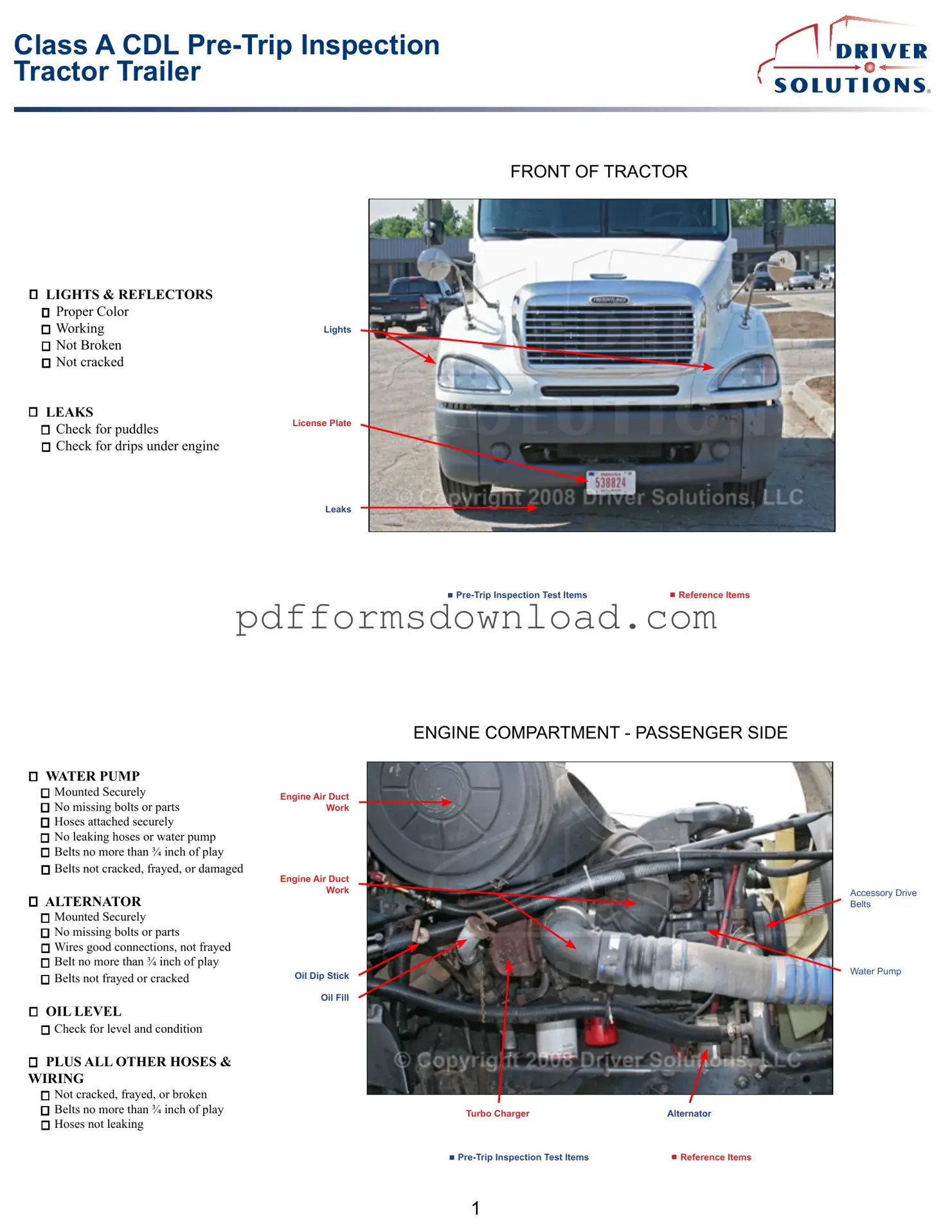What is a Pre Trip Inspection Checklist?
A Pre Trip Inspection Checklist is a tool used by drivers to ensure that their vehicle is safe and ready for operation before hitting the road. It covers various aspects of the vehicle, including brakes, lights, tires, and fluid levels, helping to identify any issues that could lead to accidents or breakdowns.
Why is a Pre Trip Inspection Checklist important?
This checklist is crucial for safety. It helps prevent accidents caused by mechanical failures. By identifying potential problems before starting a trip, drivers can address issues proactively, ensuring not only their safety but also the safety of others on the road.
Who is responsible for completing the Pre Trip Inspection Checklist?
The driver is primarily responsible for completing the Pre Trip Inspection Checklist. However, fleet managers and employers may also play a role in ensuring that drivers understand how to use the checklist properly and that it is completed before every trip.
How often should the Pre Trip Inspection Checklist be completed?
The checklist should be completed before every trip. This routine helps catch any new issues that may have arisen since the last inspection. Consistency is key to maintaining vehicle safety and compliance with regulations.
What items are typically included in the Pre Trip Inspection Checklist?
Common items on the checklist include checking the brakes, lights, and turn signals, inspecting tires for proper inflation and tread, ensuring fluid levels are adequate, and examining the windshield wipers and mirrors. Each checklist may vary slightly depending on the type of vehicle and specific regulations.
What should a driver do if they find an issue during the inspection?
If a driver finds an issue, they should report it immediately. Depending on the severity of the problem, the driver may need to fix it before proceeding or consult a mechanic. Documenting the issue is also essential for record-keeping and compliance purposes.
Can the Pre Trip Inspection Checklist be done electronically?
Yes, many companies now offer electronic versions of the Pre Trip Inspection Checklist. These digital forms can streamline the inspection process, making it easier to submit and store records. Electronic checklists often come with features that allow for easier tracking of vehicle conditions over time.
What happens if a driver skips the Pre Trip Inspection Checklist?
Skipping the checklist can lead to serious consequences. If an accident occurs due to a mechanical failure that could have been identified during the inspection, the driver may face legal repercussions and penalties. Additionally, it can put the driver and others at risk.
Are there legal requirements for completing a Pre Trip Inspection Checklist?
Yes, federal and state regulations require commercial drivers to conduct a Pre Trip Inspection. These regulations are in place to ensure that vehicles are safe for operation. Failure to comply can result in fines, penalties, and even loss of driving privileges.
How can drivers ensure they are thorough in their inspections?
Drivers can ensure thorough inspections by familiarizing themselves with the checklist and taking their time during the process. Regular training and refreshers on vehicle safety can also help drivers become more adept at identifying potential issues. Practicing diligence and attention to detail is essential for effective inspections.
